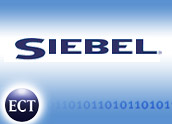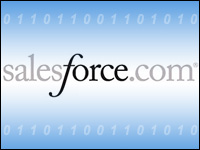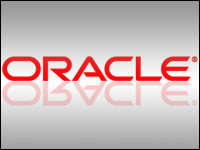
After the market closed Tuesday, Redwood Shores, California-based Oracle disclosed that it earned US$990 million, or 19 cents per share, for its fourth fiscal quarter ending May 31st. The company’s total revenue rose 9 percent to $3.1 billion during the quarter with its software revenue up 12 percent to $2.5 billion, and services revenue down 4 percent to $558 million. The fourth quarter’s operating margin reached an all-time high of 46 percent.
Earnings per share ended up a penny higher than analysts had projected. Company officials cited an increase in the sales of database servers and increased sales of software-license renewals as major contributors to the gains.
Oracle’s income rose 15 percent over last year’s fourth-quarter earnings, when the company reported income of $858 million, or 16 cents per share. Fourth-quarter 2004 revenue totaled $3.08 billion, a 9 percent increase from the same period in 2003.
Looking ahead, Oracle Chairman and CFO Jeff Henley predicted first-quarter 2005 fiscal-year earnings of 9 cents a share. Traditionally Oracle’s greatest growth shows in its last fiscal quarter, while its first tends to be the weakest.
Focused on What?
Oracle made its earnings announcement during the second week of the antitrust trial that will decide whether or not it wins its hostile bid to acquire PeopleSoft. The U.S. Department of Justice opposes the action on the grounds that it might weaken competition in the enterprise applications market.
During the audiocast of its conference call, Oracle’s Henley said that the company spent about $60 million pursing its takeover of PeopleSoft so far. When asked about the amount of senior executive time being exhausted on the PeopleSoft pursuit, CEO Larry Ellison told reporters that he spent “almost none of his time” and said that the company was keeping focused on closing sales.
For his part, Henley said that the company remained confident regarding a favorable outcome to the trial and that absorbing PeopleSoft would not be a distraction for Oracle. He also noted that the company would be looking at other possible acquisitions.
On Tuesday, Oracle stock stood at $11.71 per share, while PeopleSoft’s share price rose 61 cents over Monday’s day-end share price of $17.95. Both stocks opened lower Wednesday — $11.36 and $18.56 respectively.
Rising Database Sales
For the second quarter in a row, Oracle’s line of high-end database sales rose 15 percent to $1.1 billion.
The company is placing heavy bets on its newest high-end product, Oracle 10g. Available since December, Oracle 10g is based on grid computing, a networking scheme that harnesses unused processing cycles of all the computers on a network to solve problems too computer-intensive for a single stand-alone machine.
Ellison told reporters and analysts that Oracle 10g was selling well and claimed the product holds all database high-end performance records in the world. In addition, Ellison observed that the market was only beginning to move to low-cost, grid-based servers, adding that he himself was startled by the number of new customers migrating directly to the rack-mounted 10g products, something he thought was unusually early in a database-adoption cycle.
Mid-Market Opportunity
Ellison called the so-called midmarket a significant opportunity for Oracle and argued that in the future the company should do better in “Microsoft server-land” because of Oracle 10g’s ability to provide customers the choice of Windows or Linux on an Intel platform. According to him, 70 percent of databases run on Linux.
Scott Tiazkun, research manager of enterprise applications at IDC, told CRM Buyer that he had no doubt that Oracle 10g was off to a good start given the costs incentives and that Oracle’s next logical step was to establish a small- and medium-business strategy for it.
“This direction is not a new one – except for Oracle,” Tiazkun said, nothing that Microsoft found success with small business by following the same principles.
For her part, Dr. Katherine Jones, managing director of enterprise business applications at Aberdeen Group, told CRM Buyer that Oracle’s results fit her belief that the company has been doing well in the database world. Jones also noted that she had expected Oracle to have demonstrated better results in its application space.
Jones noted that Oracle, like many other ERP companies, has targeted the midmarket in the past. She went on to say that the midmarket is ready to buy to replace older solutions, but that traditionally it is stretched for budgets and tends to underbuy.
“It’s not just the initial cost, but the total solution and its impact on the company,” she said, adding that mid-market companies also can’t afford long deployment times or failures.














































Social CRM
See all Social CRM